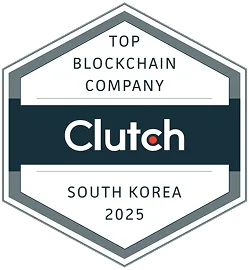What is RWA in crypto? Tokenized Real-World Assets Decoded

In the ever-evolving landscape of blockchain and cryptocurrency, Tokenized RWA development is taking center stage. This innovation is reshaping how we invest and trade tangible assets, thanks to the convergence of blockchain technology. Let's explore the world of Real-World Assets Tokenization Development, understand its significance, and how it's transforming the financial landscape.
What is RWA in Crypto?
Real-world assets (RWA) refer to tangible, physical assets like real estate, precious metals, and income-generating properties. Traditionally, investing in such assets involved complex processes and high entry barriers. However, blockchain technology has unlocked a new era by enabling these assets to be tokenized, converting them into digital tokens that can be efficiently traded and invested in.
Why Real-World Assets tokenization is gaining popularity in the crypto community
Real-world Assets tokenization is gaining momentum for several compelling reasons:
1. Diversification Opportunities: RWA tokenization provides crypto investors with an opportunity to diversify their portfolios. Until recently, the crypto space mainly consisted of digital assets like Bitcoin and Ethereum. Now, RWA introduces real-world, tangible assets into the mix, offering a different risk profile and potentially enhancing overall portfolio diversification.
2. Stable Value Backing: Many cryptocurrencies are known for their price volatility. RWA, on the other hand, often have intrinsic value because they are backed by physical assets such as real estate, commodities, or income-generating properties. This can provide a level of stability and security that crypto investors may find appealing.
3. Fractional Ownership: RWA tokenization allows for fractional ownership, meaning that investors can buy and sell smaller portions of high-value assets. This feature makes investing in real-world assets more accessible to a broader range of investors who may not have the resources to purchase entire properties or assets.
4. Enhanced Liquidity: Traditional investments in real-world assets like real estate can be illiquid, with the process of buying or selling taking time and incurring high transaction costs. RWA tokenization addresses this issue by providing a marketplace where assets can be traded more easily, improving liquidity.
5. Global Accessibility: Blockchain technology and tokenization transcend geographic boundaries. Investors from around the world can participate in RWA investments, breaking down the barriers that may have previously limited access to certain asset classes.
6. Smart Contract Automation: Smart contracts, a key feature of blockchain technology, can be used to automate various aspects of RWA transactions, such as revenue distribution or compliance with regulations. This can streamline the investment process and reduce the need for intermediaries, ultimately reducing costs.
7. Regulatory Compliance: Many RWA tokenization projects are actively working with regulators to ensure compliance with local laws and regulations. This cooperation helps build trust and legitimacy, making RWA investments more attractive to a wider range of investors.
8. Innovation and Financial Inclusion: RWA development represents a significant stride in financial innovation. It opens new doors for capital markets and creates exciting opportunities for both investors and asset owners. It also has the potential to promote financial inclusion by giving more people access to investment opportunities they might not have had otherwise.
The combination of these factors has led to the growing popularity and attention that RWA and real-world asset tokenization are receiving within the crypto community. As the technology and regulatory framework continue to evolve and mature, we can expect to see even more innovation and investment in this space.
The Significance of RWA Development
The importance of Real-World asset development in the blockchain and crypto space cannot be overstated. Let's delve into why this matters:
- Diversification: By including Real-World Assets alongside traditional cryptocurrencies, investors can diversify their portfolios, reducing risk and increasing stability.
- Asset Backing: Real-world asset tokenization is often backed by physical assets, providing a sense of security and intrinsic value to investors.
- Regulatory Compliance: Many blockchain and crypto projects are actively collaborating with regulators, ensuring compliance, which benefits investors and contributes to broader adoption.
- Innovation: crypto RWA development is a significant leap in financial innovation, opening new doors for capital markets and creating exciting opportunities for investors and asset owners.
What are RWA types?
Tokenized Real Estate
Real estate is a common asset class that is tokenized. Each token represents ownership or a fractional interest in a physical property, such as a residential or commercial building. Tokenization of real estate allows for easy division of ownership and potentially more accessible investment opportunities. Investors can buy and trade these tokens on blockchain platforms.
Tokenized Stocks
Traditional company stocks can be tokenized, making it easier for investors to buy and sell fractional shares of publicly traded companies. These tokens can represent ownership in a company, complete with voting rights and dividend payouts.
Tokenized Art and Collectibles
High-value art pieces and collectibles can be tokenized to enable partial ownership and trading. These tokens can also store provenance and ownership history on the blockchain, adding a layer of authenticity and traceability.
Tokenized Commodities
Commodities like gold, silver, or even agricultural products can be represented as tokens. These tokens can be backed by the physical assets stored in a vault, providing a way for investors to gain exposure to commodities without taking physical delivery.
Tokenized Funds and Fund Shares
Investment funds, including hedge funds and venture capital funds, can tokenize their shares, allowing for easier transfer and trading among investors.
Tokenized Debt Instruments
Bonds and other debt instruments can be tokenized, making it simpler for investors to buy and trade fixed-income assets.
Tokenized Intellectual Property
Intellectual property rights, such as patents and copyrights, can be represented as tokens, allowing creators to sell or license their IP in a more transparent and tradable manner.
Tokenized Invoices and Receivables
Small and medium-sized businesses can tokenize their unpaid invoices, turning them into assets that can be sold to investors.
Tokenized Sovereign Debt
Governments can issue tokenized bonds, making it easier for investors to buy and trade government debt securities.
Tokenization-as-a-Service: A Gateway to Real-World Asset Tokenization
Despite tokenization has gained significant traction in recent years, for many businesses, the technical complexities and regulatory hurdles associated with tokenization can be daunting. This is where tokenization-as-a-service comes into play.
Tokenization-as-a-service providers offer a comprehensive platform that simplifies the tokenization process, allowing businesses of all sizes to easily create and manage digital tokens representing their assets. These platforms typically handle tasks such as:
- Asset valuation: Determining the fair market value of the asset to be tokenized.
- Token creation: Generating crypto tokens on a suitable blockchain platform.
- Smart contract development: Designing and implementing smart contracts that govern the terms and conditions of the tokenized asset.
- Secondary market facilitation: Providing a platform for token holders to trade their tokens.
By leveraging tokenization-as-a-service, businesses can benefit from a more efficient and cost-effective way to tokenize their assets. This can open up new opportunities for fundraising, asset management, and revenue generation.
Future of Finance
In conclusion, Real-World Assets tokenization and RWA development are pivotal advancements in the blockchain and crypto sphere. These innovations provide a gateway to a more inclusive, efficient, and transparent investment landscape. As the technology matures, we can expect to see a wider array of assets tokenized and integrated into the blockchain ecosystem, shaping the future of finance.
For forward-thinking investors and those interested in blockchain and crypto, keeping a close watch on developments in Real-World Assets Tokenization is essential. These innovations are poised to play a central role in the financial world in the years to come. Embrace the future of finance with Real-World Assets tokenization.
Read more about the RWA Tokenization Use Cases:
We ❤️ Development
Follow us on social media to receive the hottest blockchain development updates













%201.webp)



